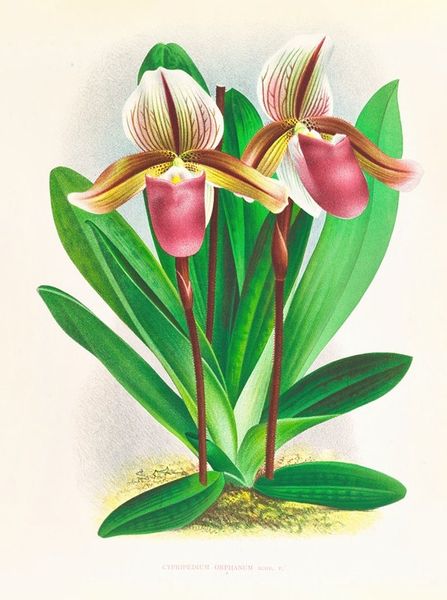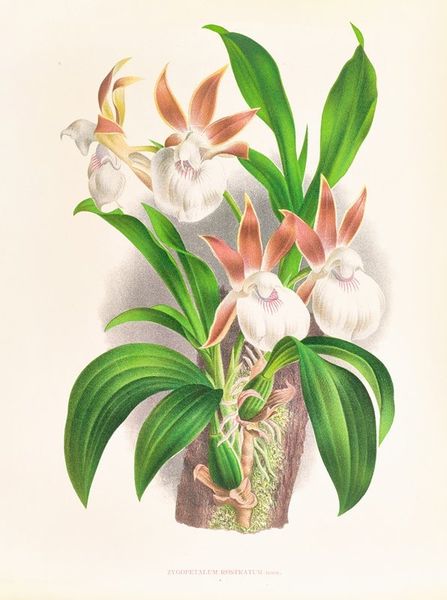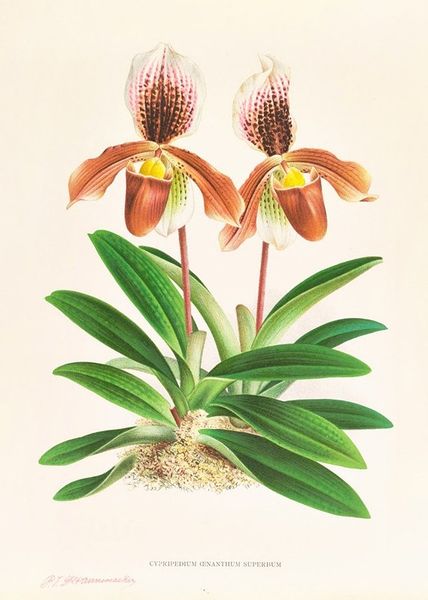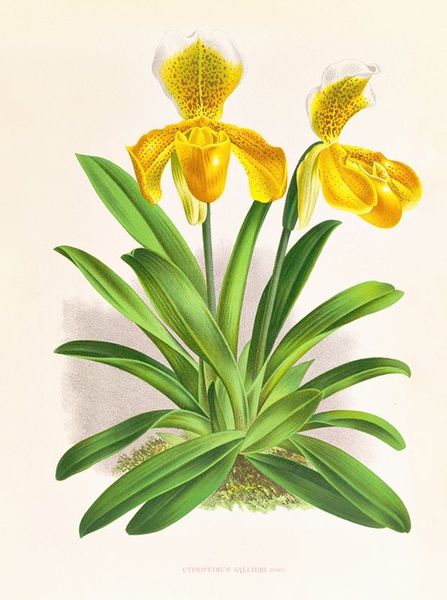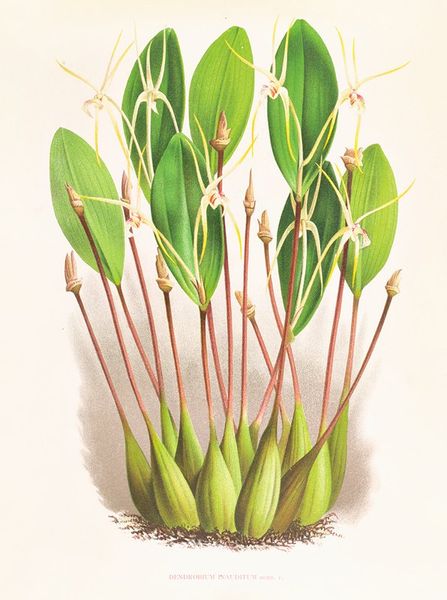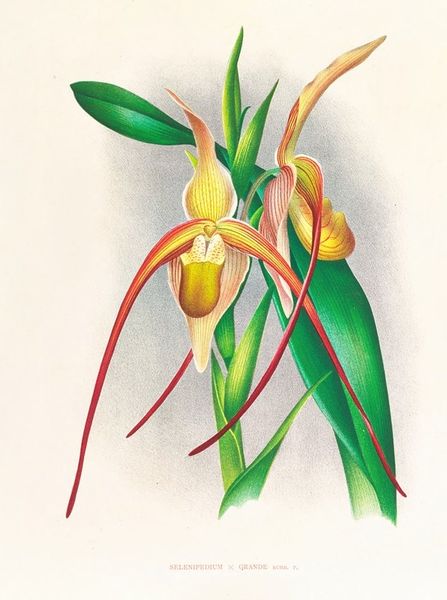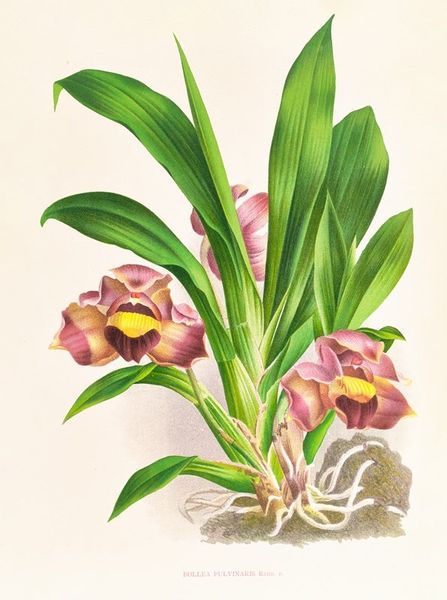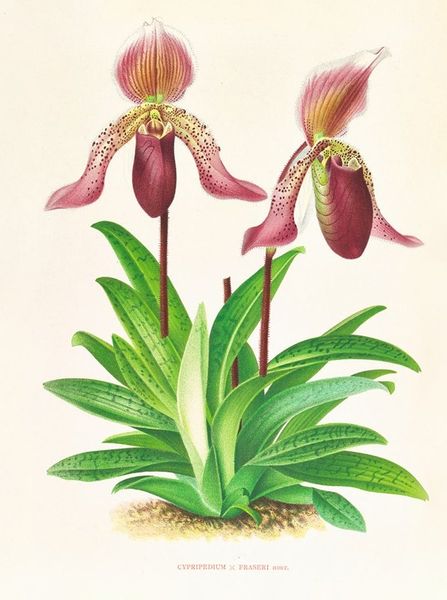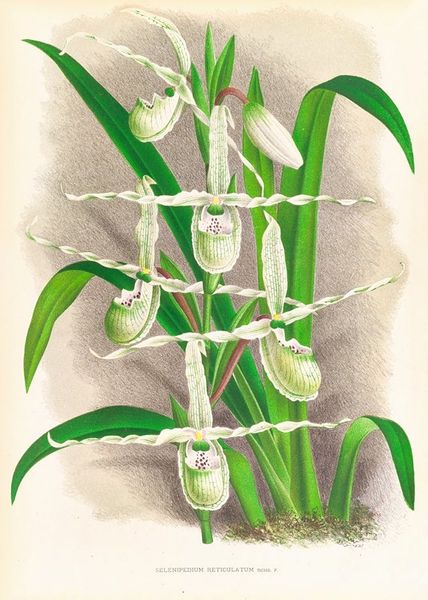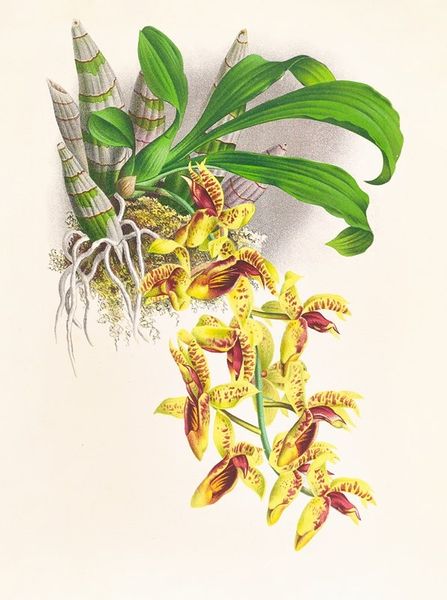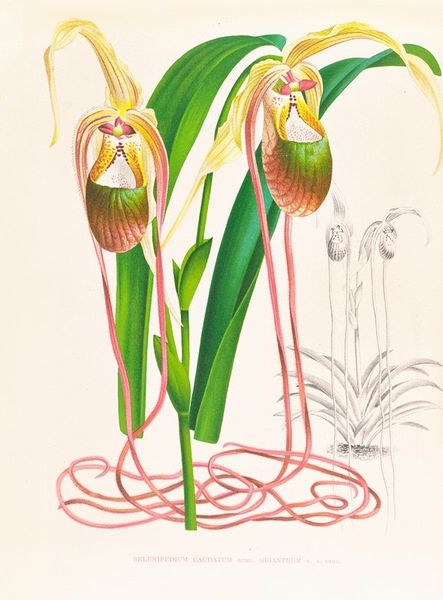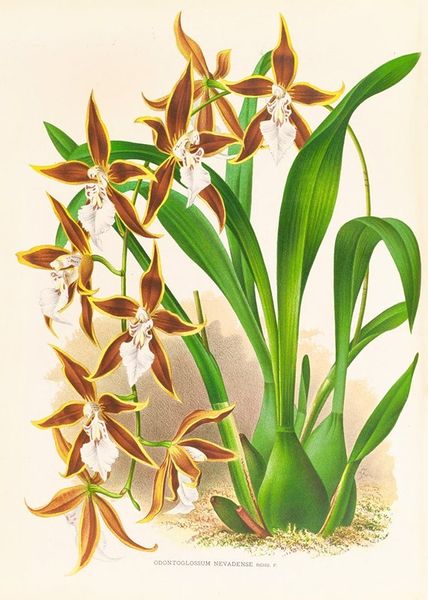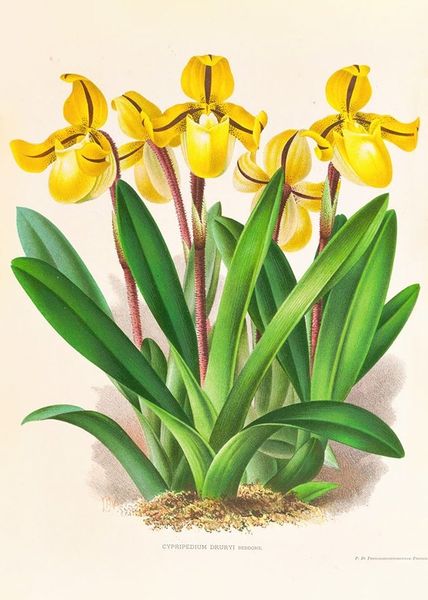
drawing, watercolor
#
drawing
#
watercolor
#
botanical photography
#
watercolour illustration
#
botanical art
#
realism
Copyright: Public Domain: Artvee
Editor: Here we have Jean Jules Linden’s "Cypripedium nitens," a watercolor drawing likely created between 1885 and 1906. The composition, with its detailed rendering of the orchid, feels almost hyperreal, yet also a little detached from its natural context. What draws your eye, and how might you interpret this work? Curator: The enduring allure of botanical art, isn't it fascinating? This particular piece carries echoes of exploration and categorization that were so central to the era in which it was created. Notice how the orchid is presented almost as a specimen. What does that suggest to you about the relationship between humans and the natural world at the time? Editor: I suppose it highlights a desire to understand and classify, almost to control, nature through observation. It seems less about appreciating beauty and more about scientific documentation. Curator: Precisely. The orchid itself, with its complex structure, acts as a symbol. Throughout history, orchids have represented everything from love and beauty to fertility and even power. This piece speaks to a certain visual language. Think of the hidden meanings, social status and maybe even colonial implications of acquiring and displaying such exotic specimens. Editor: That's a really interesting angle. It changes how I see the artwork. I initially thought it was simply a pretty flower, but now I see how it represents a much bigger story of its era! Curator: And the colors – the muted golds and browns juxtaposed with vibrant greens – evoke a certain nostalgia, perhaps even a yearning for an idealized natural world that was rapidly changing due to industrialization. What are your thoughts on the symbolism of color here? Editor: The contrast in color, to me, speaks to the dual nature of science - exploration and observation coupled with analysis and recording. It certainly makes you wonder about the artist's intention behind this seemingly straightforward depiction. Curator: Indeed. It prompts us to reflect on how we perceive and interact with the natural world, even today.
Comments
No comments
Be the first to comment and join the conversation on the ultimate creative platform.
